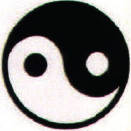The Daoist Answer
Comparison
Question
How did the Daoist outlook differ from that of Confucianism?
[Answer Question]
No civilization has ever painted its cultural outlook in a single color. As Confucian thinking became generally known in China, a quite different school of thought also took shape. Known as Daoism, it was associated with the legendary figure Laozi, who, according to tradition, was a sixth-century B.C.E. archivist. He is said to have penned a short poetic volume, the Daodejing (DOW-DAY-JIHNG) (The Way and Its Power), before vanishing in the wilderness to the west of China on his water buffalo. Daoist ideas were later expressed in a more explicit fashion by the philosopher Zhuangzi (369–286 B.C.E.).
In many ways, Daoist thinking ran counter to that of Confucius, who had emphasized the importance of education and earnest striving for moral improvement and good government. The Daoists ridiculed such efforts as artificial and useless, generally making things worse. In the face of China’s disorder and chaos, they urged withdrawal into the world of nature and encouraged behavior that was spontaneous, individualistic, and natural. Whereas Confucius focused on the world of human relationships, the Daoists turned the spotlight on the immense realm of nature and its mysterious unfolding patterns. “Confucius roams within society,” the Chinese have often said. “Laozi wanders beyond.”
The central concept of Daoist thinking is dao, an elusive notion that refers to the way of nature, the underlying and unchanging principle that governs all natural phenomena. According to the Daodejing, the dao “moves around and around, but does not on this account suffer. All life comes from it. It wraps everything with its love as in a garment, and yet it claims no honor, for it does not demand to be lord. I do not know its name and so I call it the Dao, the Way, and I rejoice in its power.”6
Applied to human life, Daoism invited people to withdraw from the world of political and social activism, to disengage from the public life so important to Confucius, and to align themselves with the way of nature. It meant simplicity in living, small self-sufficient communities, limited government, and the abandonment of education and active efforts at self-improvement. “Give up learning,” declares the Daodejing, “and put an end to your troubles.” The flavor of the Daoist approach to life is evident in this passage from the Daodejing:
A small country has few people.
Though there are machines that can work ten to a hundred times faster than man, they are not needed. . . .
Though they have boats and carriages, no one uses them. . . .
Men return to the knotting of ropes in place of writing.
Their food is plain and good, their clothes fine but simple. . . .
They are happy in their ways.
Though they live within sight of their neighbors,
And crowing cocks and barking dogs are heard across the way,
Yet they leave each other in peace while they grow old and die.7

Like Confucianism, the Daoist perspective viewed family life as central to Chinese society, though the element of male/female hierarchy was downplayed in favor of complementarity and balance between the sexes.
Despite its various differences with the ideas of Confucianism, the Daoist perspective was widely regarded by elite Chinese as complementing rather than contradicting Confucian values (see the chapter-opening image). Such an outlook was facilitated by the ancient Chinese concept of yin and yang, which expressed a belief in the unity of opposites (see figure).
Thus a scholar-official might pursue the Confucian project of “government by goodness” during the day, but upon returning home in the evening or following his retirement, he might well behave in a more Daoist fashion—pursuing the simple life, reading Daoist philosophy, practicing Daoist meditation and breathing exercises, or enjoying landscape paintings in which tiny human figures are dwarfed by the vast peaks and valleys of the natural world (see image). Daoism also shaped the culture of ordinary people as it entered popular religion. This kind of Daoism sought to tap the power of the dao for practical uses and came to include magic, fortune telling, and the search for immortality. It also on occasion provided an ideology for peasant uprisings, such as the Yellow Turban Rebellion (184–204 C.E.), which imagined a utopian society without the oppression of governments and landlords (see pp. 223–24). In its many and varied forms, Daoism, like Confucianism, became an enduring element of the Chinese cultural tradition.